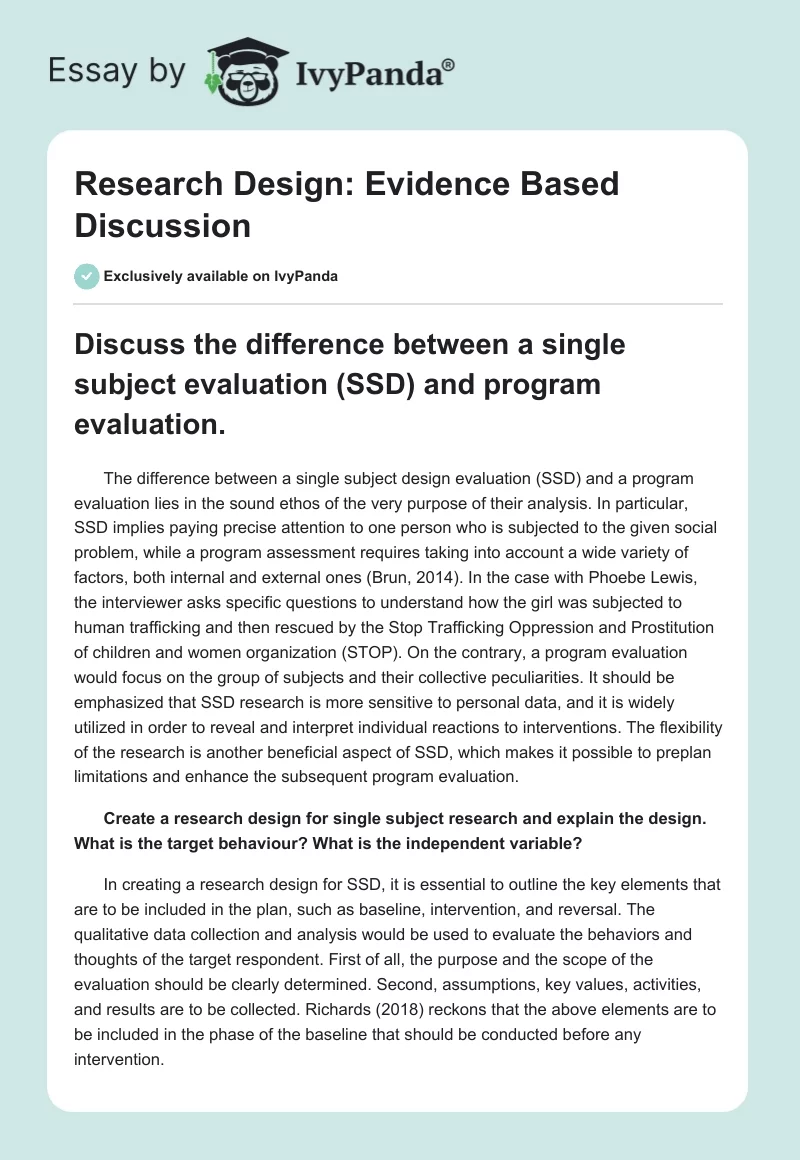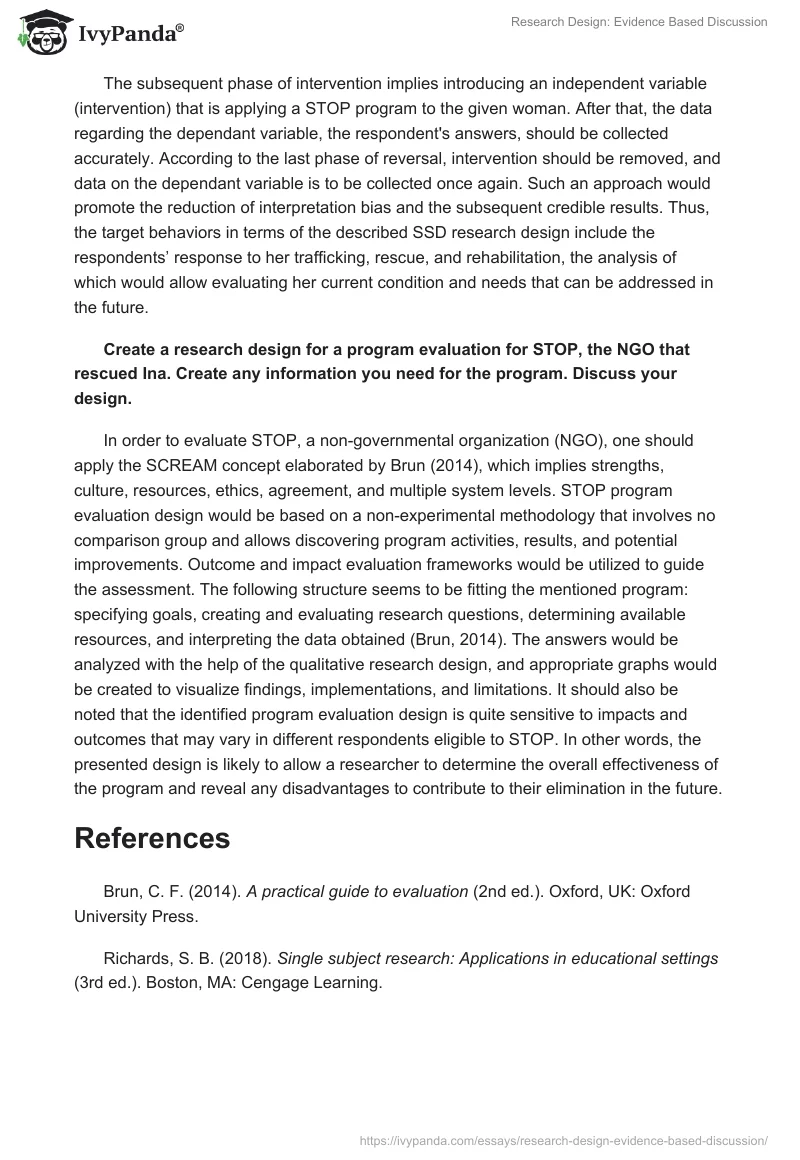Discuss the difference between a single subject evaluation (SSD) and program evaluation.
The difference between a single subject design evaluation (SSD) and a program evaluation lies in the sound ethos of the very purpose of their analysis. In particular, SSD implies paying precise attention to one person who is subjected to the given social problem, while a program assessment requires taking into account a wide variety of factors, both internal and external ones (Brun, 2014). In the case with Phoebe Lewis, the interviewer asks specific questions to understand how the girl was subjected to human trafficking and then rescued by the Stop Trafficking Oppression and Prostitution of children and women organization (STOP). On the contrary, a program evaluation would focus on the group of subjects and their collective peculiarities. It should be emphasized that SSD research is more sensitive to personal data, and it is widely utilized in order to reveal and interpret individual reactions to interventions. The flexibility of the research is another beneficial aspect of SSD, which makes it possible to preplan limitations and enhance the subsequent program evaluation.
Create a research design for single subject research and explain the design. What is the target behaviour? What is the independent variable?
In creating a research design for SSD, it is essential to outline the key elements that are to be included in the plan, such as baseline, intervention, and reversal. The qualitative data collection and analysis would be used to evaluate the behaviors and thoughts of the target respondent. First of all, the purpose and the scope of the evaluation should be clearly determined. Second, assumptions, key values, activities, and results are to be collected. Richards (2018) reckons that the above elements are to be included in the phase of the baseline that should be conducted before any intervention.
The subsequent phase of intervention implies introducing an independent variable (intervention) that is applying a STOP program to the given woman. After that, the data regarding the dependant variable, the respondent’s answers, should be collected accurately. According to the last phase of reversal, intervention should be removed, and data on the dependant variable is to be collected once again. Such an approach would promote the reduction of interpretation bias and the subsequent credible results. Thus, the target behaviors in terms of the described SSD research design include the respondents’ response to her trafficking, rescue, and rehabilitation, the analysis of which would allow evaluating her current condition and needs that can be addressed in the future.
Create a research design for a program evaluation for STOP, the NGO that rescued Ina. Create any information you need for the program. Discuss your design.
In order to evaluate STOP, a non-governmental organization (NGO), one should apply the SCREAM concept elaborated by Brun (2014), which implies strengths, culture, resources, ethics, agreement, and multiple system levels. STOP program evaluation design would be based on a non-experimental methodology that involves no comparison group and allows discovering program activities, results, and potential improvements. Outcome and impact evaluation frameworks would be utilized to guide the assessment. The following structure seems to be fitting the mentioned program: specifying goals, creating and evaluating research questions, determining available resources, and interpreting the data obtained (Brun, 2014). The answers would be analyzed with the help of the qualitative research design, and appropriate graphs would be created to visualize findings, implementations, and limitations. It should also be noted that the identified program evaluation design is quite sensitive to impacts and outcomes that may vary in different respondents eligible to STOP. In other words, the presented design is likely to allow a researcher to determine the overall effectiveness of the program and reveal any disadvantages to contribute to their elimination in the future.
References
Brun, C. F. (2014). A practical guide to evaluation (2nd ed.). Oxford, UK: Oxford University Press.
Richards, S. B. (2018). Single subject research: Applications in educational settings (3rd ed.). Boston, MA: Cengage Learning.


